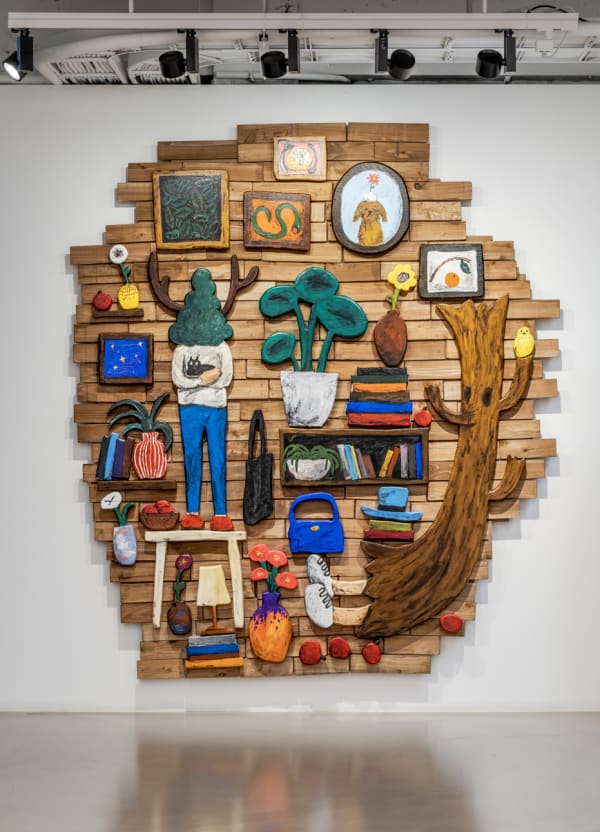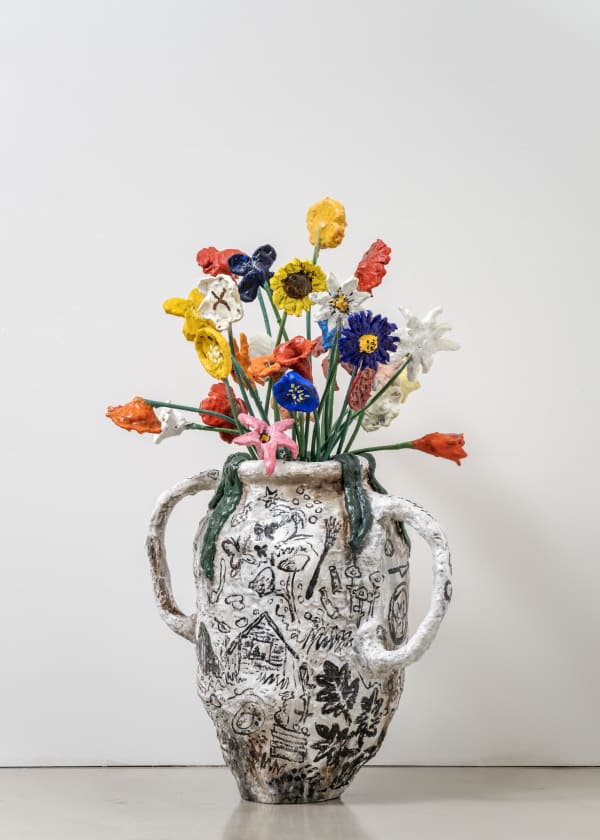Yuichi Hirako: Mount Mariana
Gallery Baton is pleased to announce, Mount Mariana, a solo exhibition by Yuichi Hirako (b. 1982) from 13th August to 16th September. Since Cygnus Loop—a group exhibition in 2019, it is the first solo exhibition at Gallery Baton by the artist who has gained growing international recognition by dealing with significant issues related to human and nature, environment and coexistence with his own styles full of metaphors and symbols through his authentic hybrid-figurations.
When the group of artists presenting character-based paintings is attracting considerable attention in this contemporary era, Hirako’s practice manages to obtain its singularity as he not only organically combines classical art with formal aesthetics and structural mechanism of the current media art but internalizes them.
Apart from mythological half human—half beast creatures, the general opinion is that the idiom of realizing non-human objects into human figures firstly appeared in Vertumnus (1590), one of the most known paintings by Giuseppe Arcimboldo, a conventional court painter in the 16th century. Unlike the majority of court painters of the time concentrating on portraits of royal families and privileged classes, Arcimboldo produced a number of 'Composite Heads' series—imaginative portraits of heads made entirely of objects such as fruits, vegetables, flowers and trees in his own exquisite compositions. Although the classic painting style was dominant, his paintings were certainly extraordinary enough to give whimsical visual surprise and entertainment to the people in the period. Also, Arcimboldo’s heritage whose motifs encompassed the cycle of seasons or the four elements is often interpreted as an origin of numerous surrealists in the 20th century including Max Ernst who frequently brought images of ‘bird-head humans’ to his canvases.
The exhibition title, Mount Mariana, is a non-existing place created based on Mariana Trench, the deepest ocean trench on Earth located in the western Pacific Ocean. Like the legend of Atlantis, a fictional island mentioned in Plato’s allegory, the main premise in which a character in an appearance similar to mankind’s inhabits elsewhere humans can not reach out and she or he peacefully coexists with other creatures in an unknown forest is a key plot penetrating Hirako’s works.
In order to enhance the narrative aspect of the works and construct details of the storyline developed from the main theme, he came up with a hybrid character called 'Tree Man' and other sub-features including cats and dogs. Deploying the secondary characters is one of the standard schemes of contemporary animation in terms of advancing plots; it plays a significant role in preventing a monotonous story flow which easily occurs in a feature-length story or a series and moreover, it helps to explain circumstances of a certain scene more efficiently. Hirako’s fictional setting that they are also protected as much as the main character ultimately shows compassion the artist feels towards nature and animals. Being named ‘Mount Mariana’ in the exhibition, the place is a forest region regarded as a sacred realm in Japan as it is the heart of the circulating system where numerous plants and animals secure a supply for their necessities of life. Originally from Okayama Prefecture known for its mostly rural mountain landscapes, Hirako spent enough time to deeply reflect upon the position of the urban green areas or roadside trees built in the cause of giving the metropolitan citizens psychological consolation and indoor plants for interior decoration while staying in London for his Bachelor Degree. His belief that organisms are not supposed to barely maintain their minimum lifespan under excessive control in human spaces has progressed into the principal subject of Hirako’s practice.
This perspective is connected to the context of Deep Ecology’s understanding: all living beings as dependent existences on others within a single ecosystem. Hirako’s paintings also describe that nature is no longer a target to overcome or exploit, yet it should be respected and given an equal right it inherently deserves. The modern environmental awareness campaigns tend to make a blunt accusation of the destruction of nature and maltreatment of flora and fauna, whereas Yuichi Hirako takes a different approach to consistently explore the potential of paintings as a medium unveiling his faith beyond the works’ aesthetic values.
Yuichi Hirako graduated with honors from Wimbledon College of Arts, London. He has held solo exhibitions, including Tokyo Opera City Art Gallery, Tokyo (2018) and participated in group exhibitions at Museum of Contemporary Art, Tokyo (2010) ; Ueno Royal Museum, Tokyo (2013); Tokyo Metropolitan Art Museum, Tokyo (2013); Museum of Modern Art, Gunma(2010); Gallery Baton, Seoul (2019); Chapter II, Seoul (2018) and etc. His work is represented in the collection of Shanghai Powerlong Museum, China; Lisser Art Museum, Netherlands; AkzoNovel Art Foundation, Netherlands; Jean Pigozzi Collection, Switzerland; and Dai-ichi Life Insurance Company, Japan.







